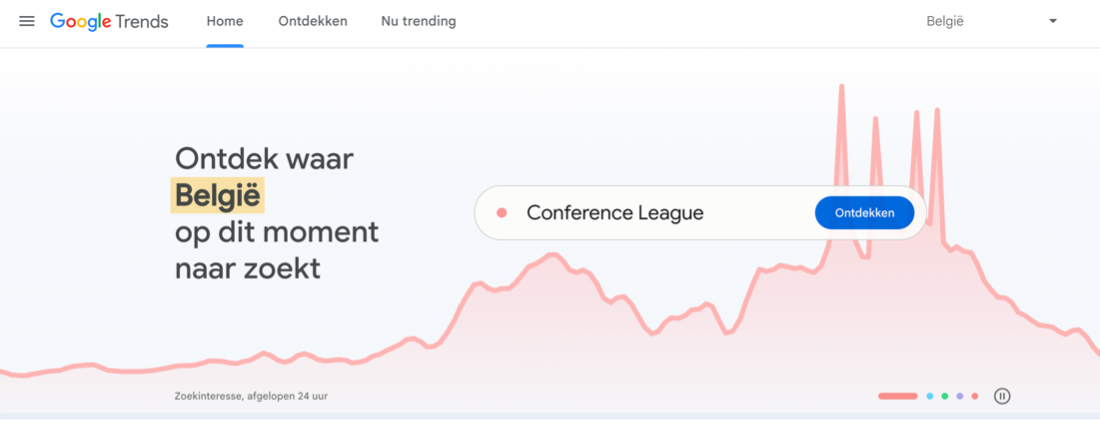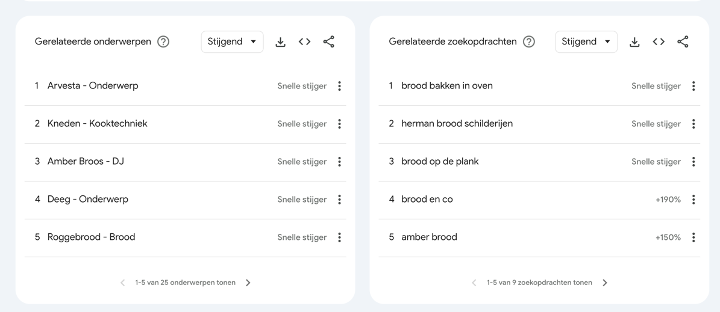5 tips to rank higher on Google
How do you get your website to rank higher in Google’s search results? Many business owners experience problems with the online visibility and findability of their business. In this blog, you’ll learn how to make sure people find your business.

What is SEO?
SEO stands for search engine optimization. This entails making your website more visible and relevant to search engines. In other words, it is making sure that the words you use while writing the blogs on your website are words that are actually used and searched for by your target audience.
According to Hubspot’s Ultimate Guide to SEO, globally, about 92% of all searches are done on Google. So it is extremely important for your website to be on the first page when such a search is performed. If not, you significantly lower your chances of getting potential customers.
How do you get started? The first step of a good SEO strategy is keyword research.
Tip 1: Keyword research
Every SEO plan should begin with keyword research. This involves figuring out which words and phrases your target audience is searching for in Google. Understanding these keywords can help you tailor your website’s content to their interests and get more customers to your website
What does this look like in practice? The first thing you need is a tool to see what people are searching for on Google. There are many good tools out there, like Ahrefs and Answer the Public.
For people who are just starting out with SEO, these tools can often be overwhelming, more importantly, these tools often come with quite a price tag. Fortunately, there are also some free alternatives for doing basic SEO, such as: link building, optimizing the user experience, grabbing regional SEO and making good use of Google Trends.
1.1 Google Trends

Google Trends is a free platform that anyone can use. It shows you what people are searching for within a given region and by area of interest.
Example:
Imagine you are a baker, and you want to improve the SEO of your website. To do this, you will have to create content that interests your target audience while making sure that the right keywords appear in this content.
To help you start using Google Trends, think of the game where you have to say the first word that comes to mind after hearing another word. For example, when someone says “baker,” what would you say? “Bread?” indeed, so would we. Now you can begin your research in Google Trends with the word ‘bread’.

When you enter ‘bread’, the first thing you’ll see is a graph showing the interest in this topic over a 30-day period. From this graph, we can determine that ‘Bread’ is a very good topic because the interest in this topic remains fairly stable. This means that the term ‘bread’ will continue to attract people to your website without losing interest over time and you having to replace the content.
Content that is on the rise can be good for attracting a lot of people to your website quickly because it is a so-called “hot topic,” but keep in mind that you need to update or even replace this content regularly. Just like any trend, interest in these types of topics peaks very quickly and sharply, but then disappears just as quickly. And when your topic is no longer searched for it will no longer attract visitors to your website. Hence, you need to replace these hot topics regularly

When you scroll down to the bottom of the page you will find two columns displaying related subjects and related searches. This information is going to help you select the topic for your blogpost and your keywords.
Related subjects
In the left column, we can see that words like ‘kneading’ and ‘rye bread’ should definitely be used in our content, as interest in these is rapidly increasing.
Related searches
In the right column, you can see the related searches, this shows what people who searched for ‘bread’ are still searching for. In this case, they also searched for ‘baking bread in oven’. So if your bakery also offers, for example, a bread mix for baking your own bread, this could be a good topic for your blogpost.
Based on this info from Google Trends, you can conclude that ‘How to make your own rye bread’ or ‘The best way to knead bread’ are ideal blogpost topics to start working on and improve the SEO of your website.
Tip 2: Link building
Another way to improve your SEO is link building. You can do this by placing links on other platforms or websites to attract people to your website.
There are different ways of doing this. You can play it smart by setting up collaborations with other local SMEs (Small and Medium-sized Enterprises) to regularly link to each other in blog posts. Think of a baker and a butcher, or a beautician and a hairdresser and so on.
Tip 3: User experience
Something you definitely should not forget when you are improving your website’s SEO is the user experience. It would be a shame to put all that effort into bringing people to your website just to lose them after a few seconds due to a poor user experience.
According to our designers here at Blends, the following 3 things are important to provide a good user experience:
1. Always keep the design of your website up to date
2. Make sure you have a smooth loading time
3. Put a link to all your most popular articles on your homepage
Did you manage to follow these steps? Then you have just dramatically increased the chance that a visitor will stay longer on your website
Tip 4: Regional SEO
As a local business, don’t forget about regional SEO. This involves increasing your online findability within your own region. You can do this easily and for free by creating a Google My Business Page for your business.
By creating this page, your company will appear immediately when someone searches for your company’s name. It also makes your business visible on Google Maps. This is yet another route for potential customers to find your website.
Tip 5: Analytics and tracking
Last but not least, it’s best to keep track of how many visitors come to your website and what they look at most. This way, you’ll know whether your SEO strategy is working, and you’ll also know which blogs and topics are most popular with your target audience so you can come up with even more relevant content.
To monitor the activities on your website, use an analytics tool such as Google Analytics. This tool is completely free. All you have to do is create an account and link it to your website. Once this is done, you will have access to all the data of your website.
Would you like to test the SEO of your website? Or do you need any help using any of the mentioned tools?
Request a free audit now using the form below!
Thank You
We will be in touch with you very shortly.